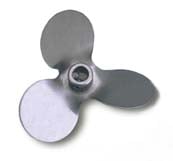A calibration bath is an ideal temperature source for temperature calibration. Metrologists are, by nature, extremely concerned about instrument performance. Which is why, Fluke Calibration baths are each designed specifically for metrology. They are not adaptations of equipment designed for biology or chemistry labs, and that's why their performance meets the rigorous requirements of a calibration lab.

When selecting between different calibration baths, you want to match your requirements up with some of the features and functions of the baths.
- Controllers, how you set temperatures on the calibration bath
- Automation, how much you can set and forget the parameters needed during calibrations
- Heating, the technology used to heat and cool the bath in order to meet the temperature requirements of your calibrations
- Fluid mixing, what method is used to keep the bath fluid properly mixed for stable temperatures
- Maintenance, how much work and time do you need to put in to keep your bath running and calibrating properly
Calibration bath controllers
The first step in evaluating a bath to suit your needs is to look at its temperature controller. We designed our own proprietary control technology to deliver stability up to ±0.0001°C with features to make your work go more quickly.

The hybrid analog and microprocessor design is unique. Set-point resolution is 0.01°C (0.002°C on some models), and our vernier resolution mode shifts the controller display so you can adjust the bath set-point to the fifth decimal place. Although thermal noise in the bath is measured at four decimal places, the vernier function still gets you closer to an absolute temperature.
Eight of your most frequently used set-point temperatures are stored for quick recall and faster bath setup. Temperature can be easily switched between Celsius and Fahrenheit. Safety cutout temperatures are also set on the LED display. Fluke Calibration baths are each fitted with a high-stability PRT or thermistor as the control sensor.
A proportional, integrating control function directs power to the bath heaters. Factory tuning eliminates most overshoot and allows the bath to achieve maximum stability within 10 to 15 minutes after reaching the set temperature.
Calibration bath automation
Another bath issue to pay attention to is the level of automation. With Fluke Calibration baths, you can select from an RS-232 or IEEE-488 interface options.

Heat Port Technology
How the bath is heated and cooled to maintain the temperature you need to run calibrations is another technology you want to pay attention to when selecting a bath.
Some manufacturers place separate heating and cooling coils directly in the bath reservoir. In this setup, heat enters and exits the bath at two different physical locations.
Fluke Calibration uses Heat Port Technology, meaning there’s only one heat path, instead of two which provides improved uniformity and stability. The cooling coil and the heater are sandwiched to the outside of the bath’s stainless-steel tank. The tank bottom becomes the heat port with most of the heat entering and exiting the bath through a single location. Other heat leaks are minimized by providing well-designed insulation around the tank.

Fluke Calibration uses two types of stainless-steel tanks. Some of our smaller baths use deep-drawn tanks, while the larger baths have tanks made of heavy-gauge stainless steel that is fabricated and welded in our own factory so we can control quality. The large openings of these baths make them an excellent choice for sensor manufacturers and others that test large batches of sensors or special probes of unusual size and shape.

Mixing calibration bath fluid
For mixing the bath fluid, Fluke Calibration uses a carefully balanced stirring mechanism. The number of propellers and the pitch of the blades are adjusted to thoroughly mix the bath medium and eliminate both horizontal and vertical gradients.

Another mixing option you may see when looking at other calibration baths are circulating pumps. However, the tubular inlet and outlet design on these can cause thermal-flow patterns in the bath that create unnecessary gradients.
Calibration bath maintenance and cleaning
When taking on any new piece of equipment, it’s important to understand the regular maintenance you’ll be signing up for. That’s exactly why Fluke Calibration baths are designed to be easy to maintain. The stir motors last longer; there are no pumps to unclog or repair. The Heat Port Technology means no heating and cooling coils to be careful of when cleaning.